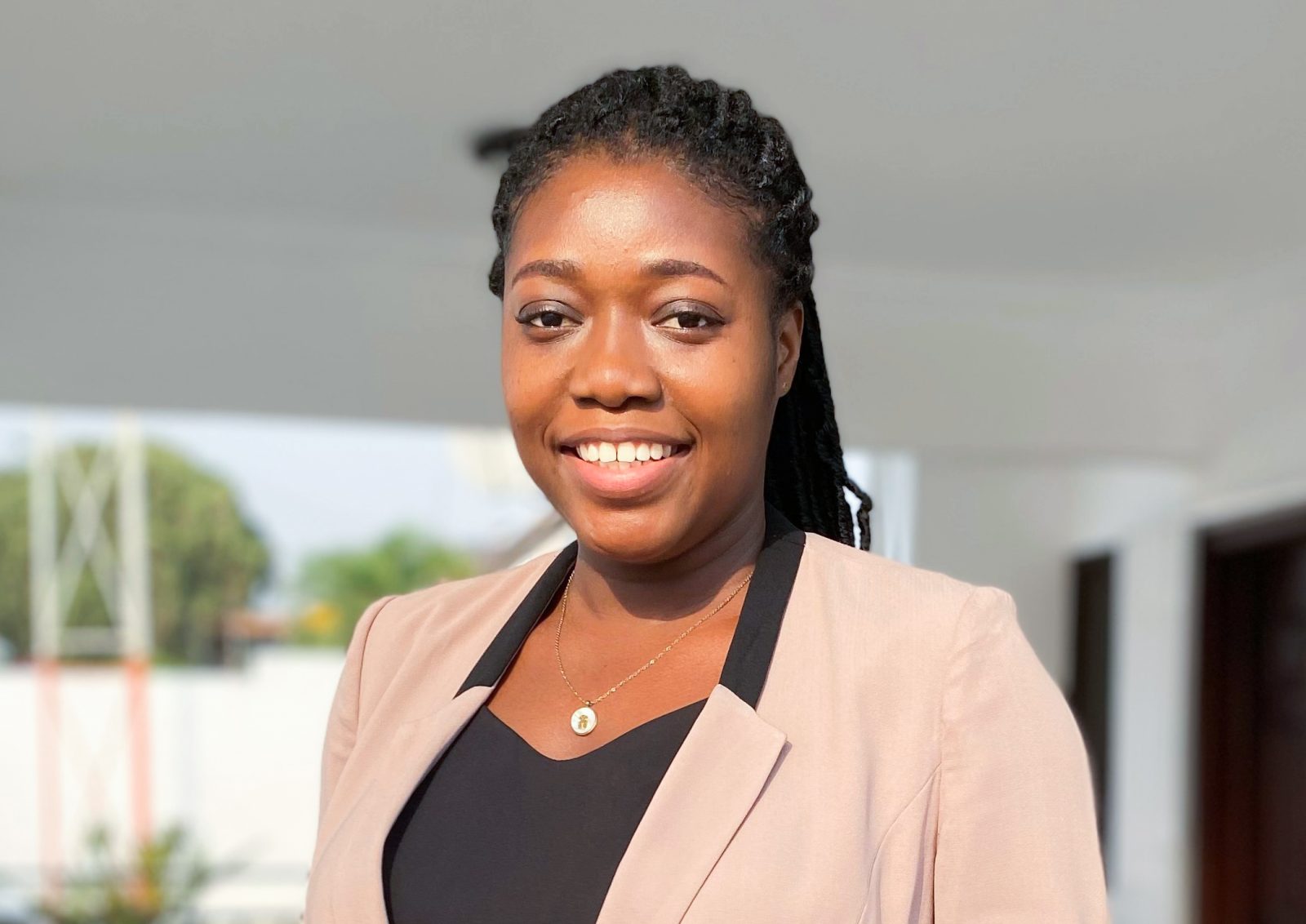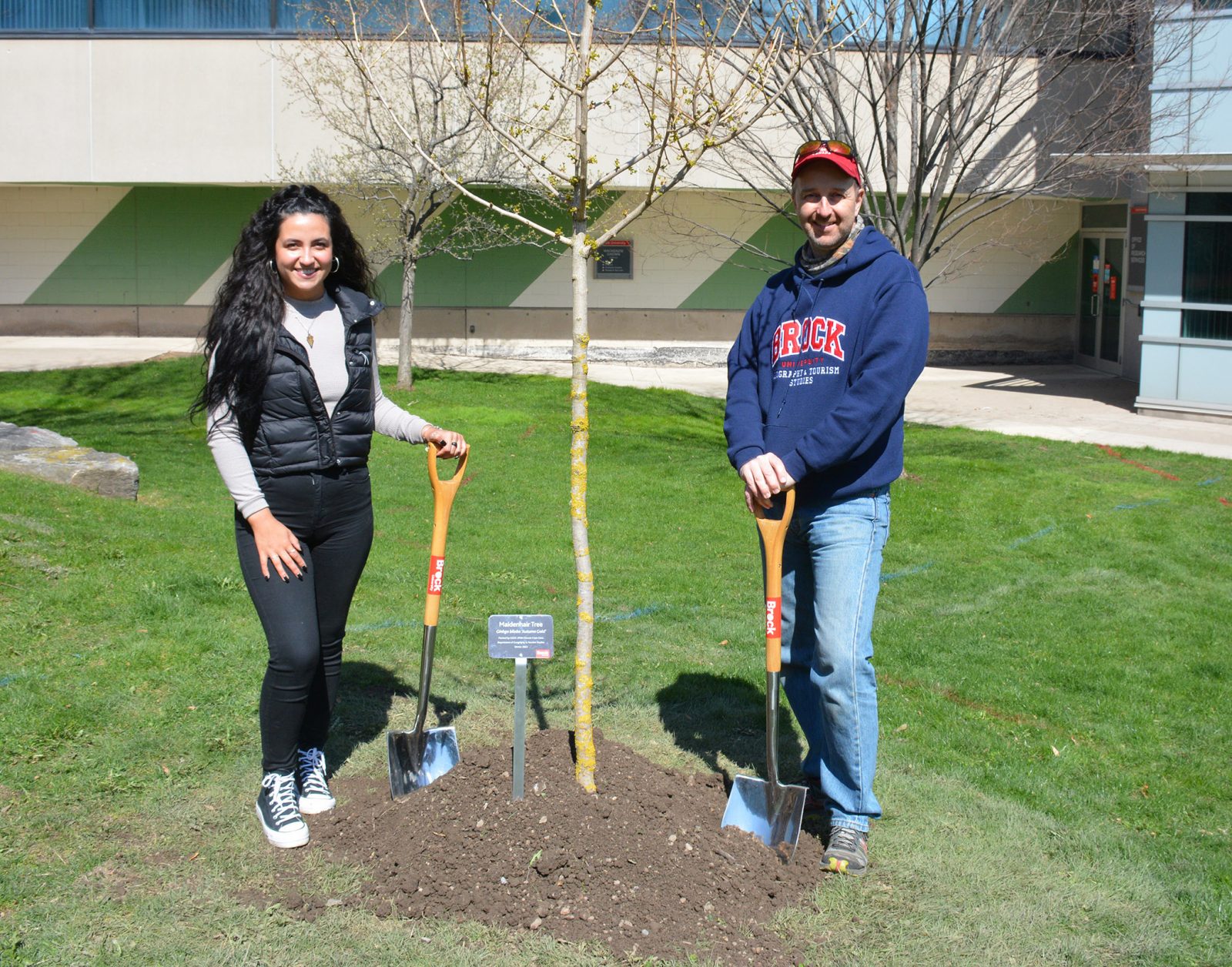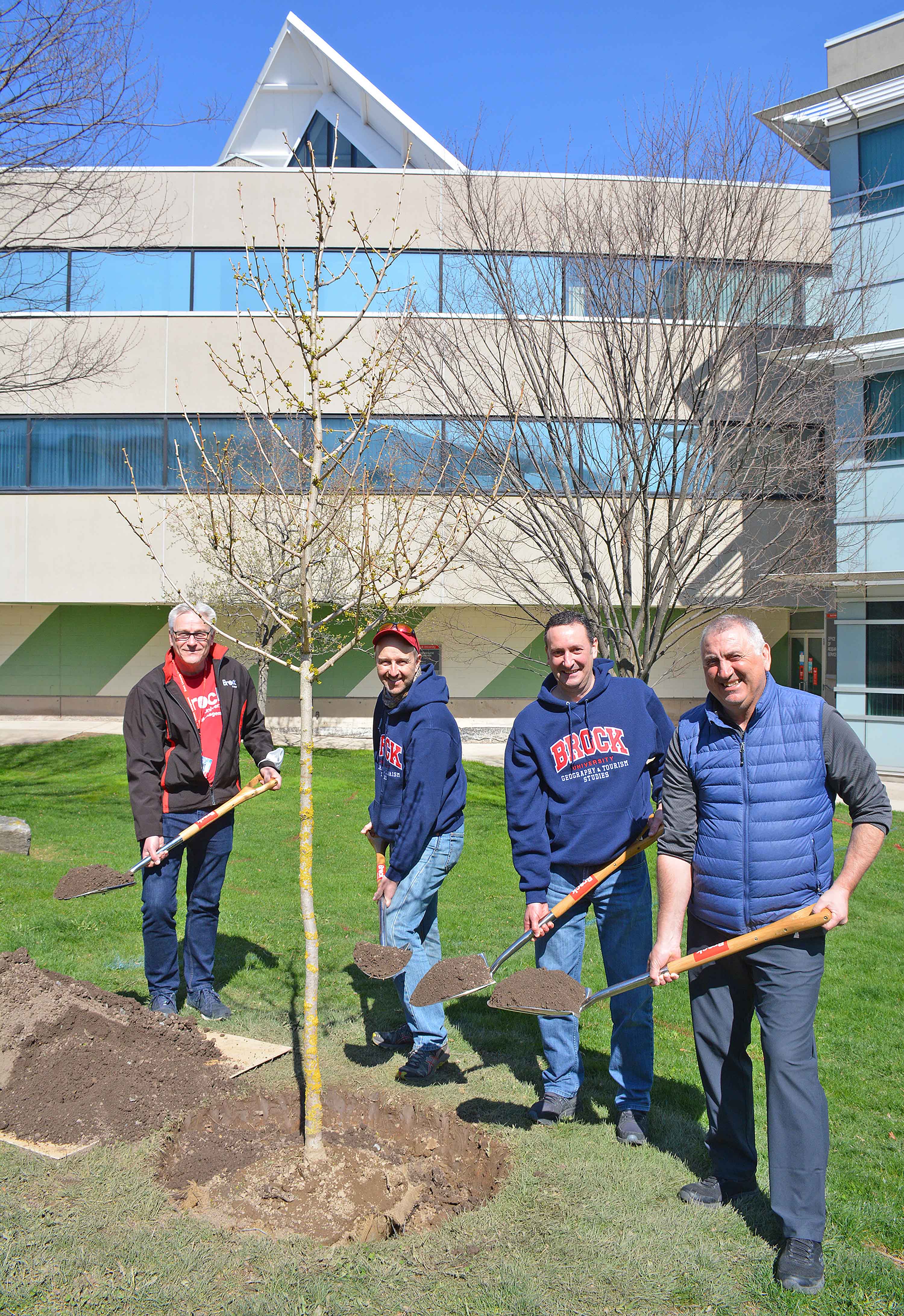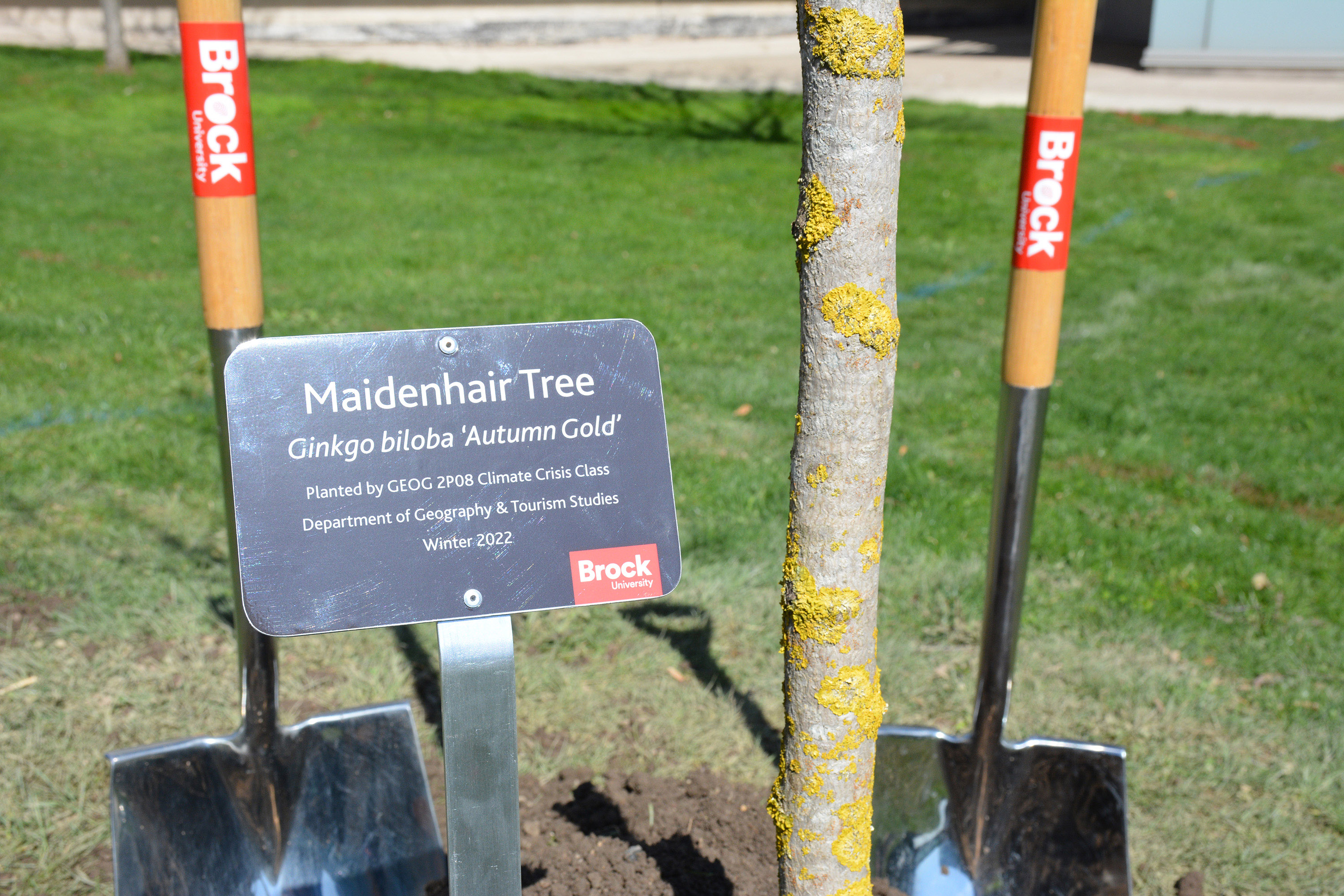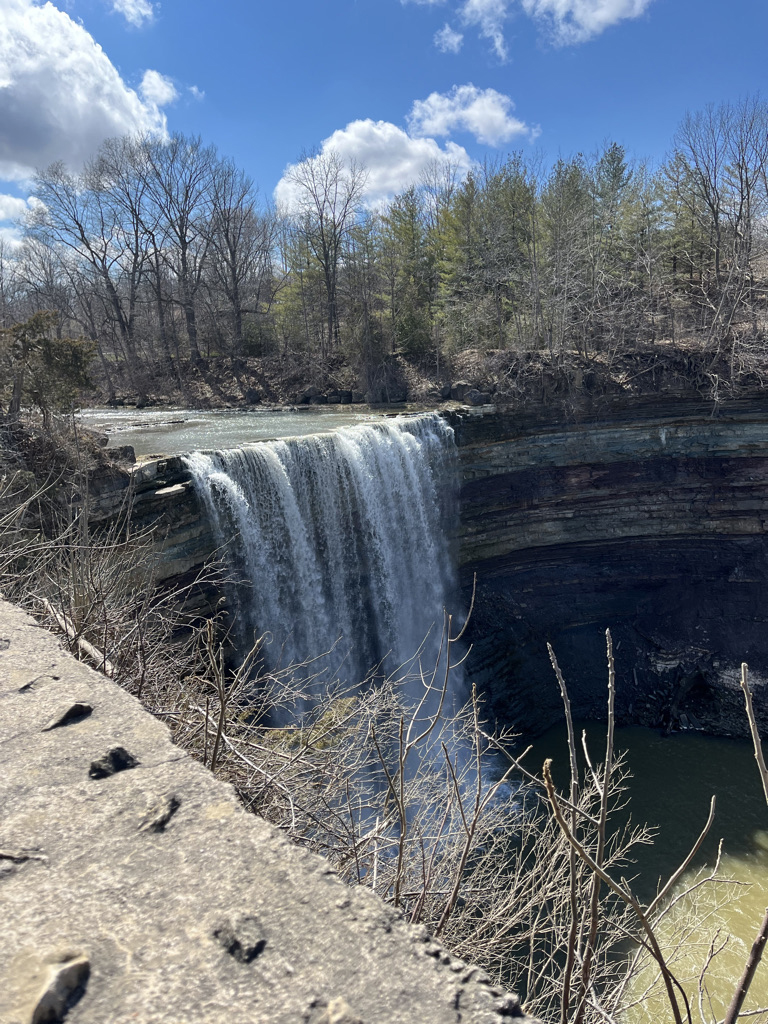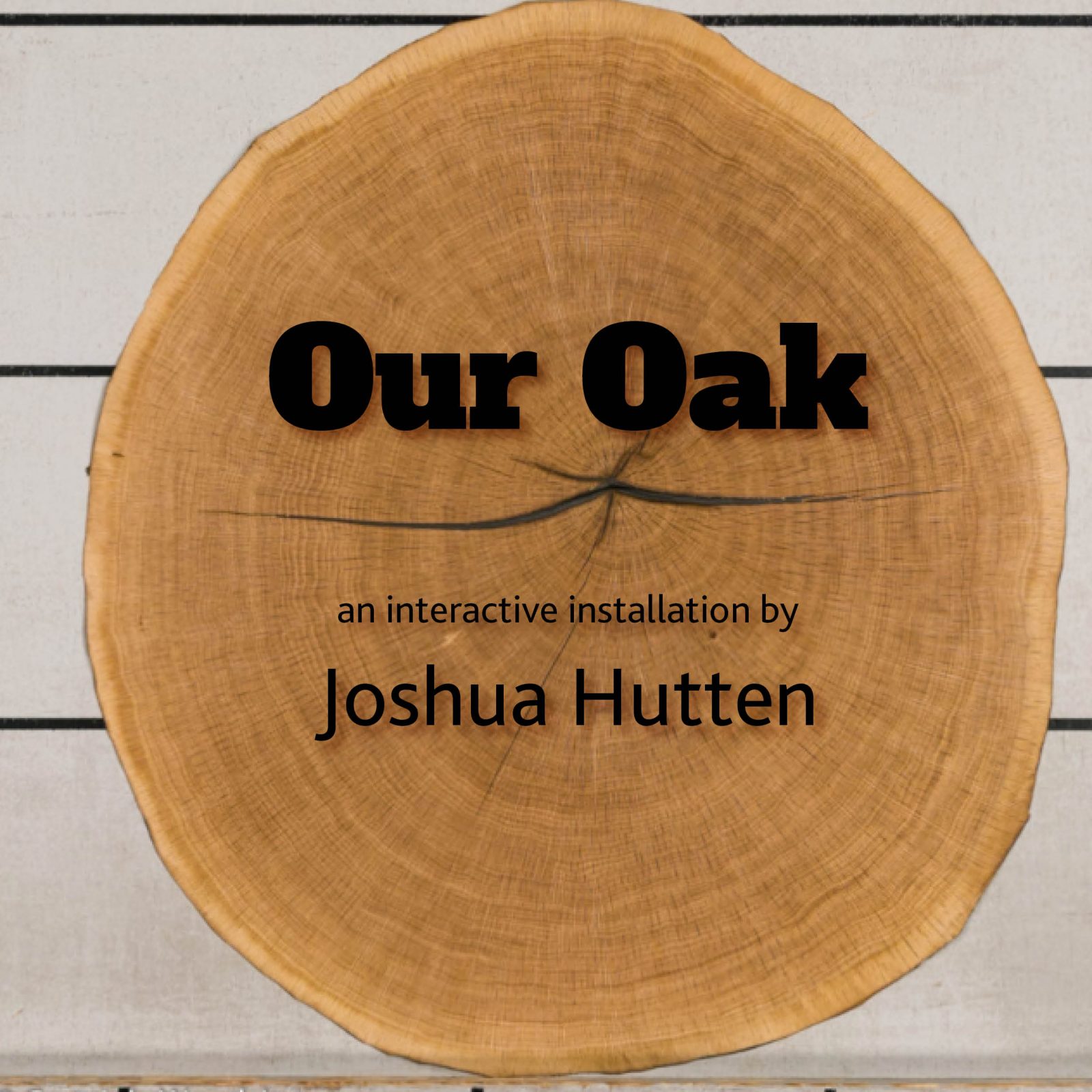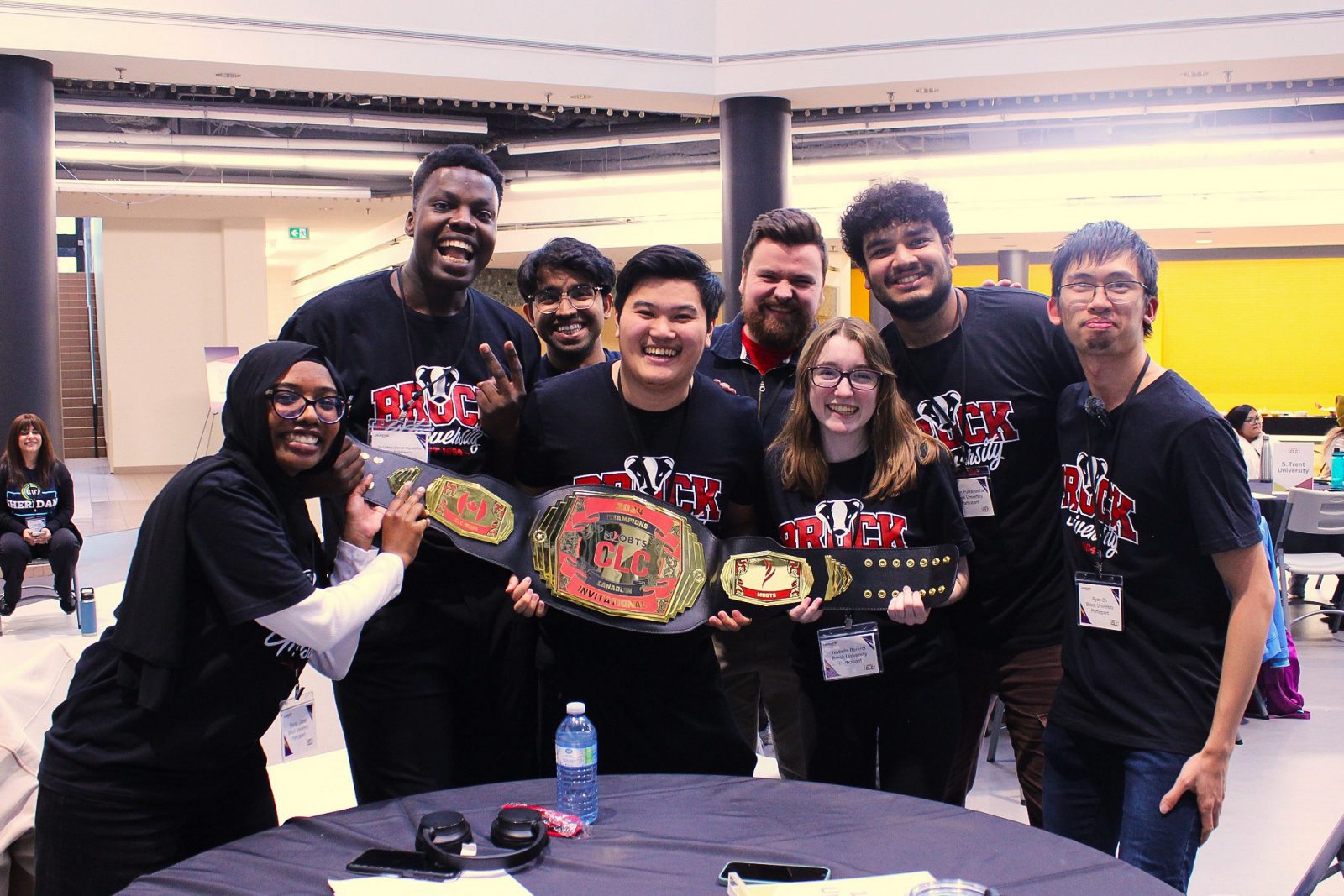
Third-year Medical Sciences student Randa Joatar (left), second-year Medical Sciences student Tochukwu Daniel Oguejiofor, Medical Sciences Research Assistant Kanishka Wijesundara (BSc ‘23), fourth-year Business Administration student Kylor Huang, Brock University Student Life and Success, Leadership Development Coordinator Travis Greene (BA ‘19), first-year accounting student Isabella Berardi, third-year Sport Management student Aryan Debojyoti Purkayastha, and fourth-year Tourism and Management student Ryan On celebrate their first-place win at the Collegiate Leadership Competition’s National Invitational on Saturday, March 16.
A team of Brock University students took home first place during the Collegiate Leadership Competition’s (CLC) National Invitational last month.
Brock students competed against other Ontario college and university teams at Wilfred Laurier University on Saturday, March 16.
To prepare, the team spent months honing their ability to provide support and problem-solve while uncovering their unique leadership skills.
“Everyone has the ability to be a leader in their own way. Anyone can be a leader because leadership is a process, not a position,” said Travis Greene (BA ‘19), Leadership Development Co-ordinator for Brock University’s Student Life and Success and the team’s coach.
Greene and Assistant Coach Kanishka Wijesundara (BSc ‘23) worked with six students on Brock’s team:
- Isabella Berardi, first-year Co-op Accounting
- Aryan Debojyoti Purkayastha, third-year Sport Management
- Kylor Huang, fourth-year Business Administration
- Randa Joatar, third-year Medical Sciences
- Ryan On, fourth-year Tourism Studies
- Tochukwu Daniel Oguejiofo, second-year Medical Sciences
Joatar said training for the CLC taught her valuable lessons in leadership.
“It’s more than merely sharing a vision and delegating tasks. It’s about offering support, understanding the stresses of teammates and knowing when to act as the lead or support,” she said. “This experience was a great way to gain transferrable skills and make friends along the way.”
Greene is hopeful the CLC win will inspire more people interested in getting involved across campus, whether that be with through Campus-Wide Co-Curriculum, volunteering or enrolling in one of the many training opportunities available to students and Brock employees.
“The successes of these six students can be seen as a massive inspiration to all students at Brock,” says Greene. “This year’s team have acquired a wide arrange of skills, involvement and passions that any other student on campus can achieve themselves if they want to.”
Following the national CLC success, Brock’s team went on to compete against schools across Canada and the United States in the CLC Global Championship online on Thursday, April 4 and Saturday, April 6. The team placed seventh and was one of only three teams to get a perfect score on the final activity of the competition.
For more information about student leadership opportunities, visit Brock’s Student Life Success website.
